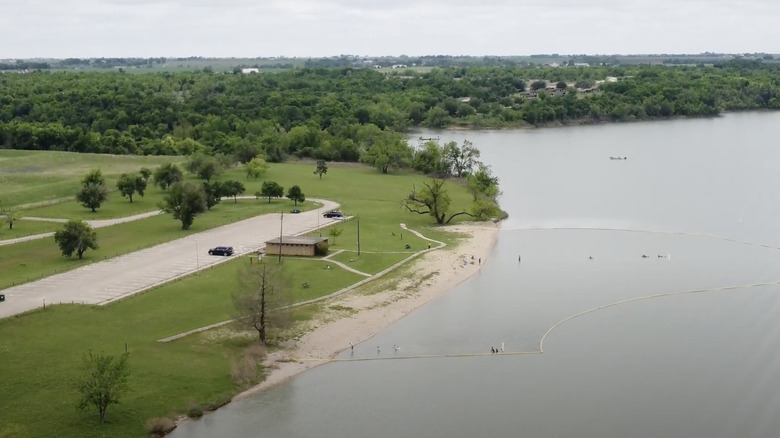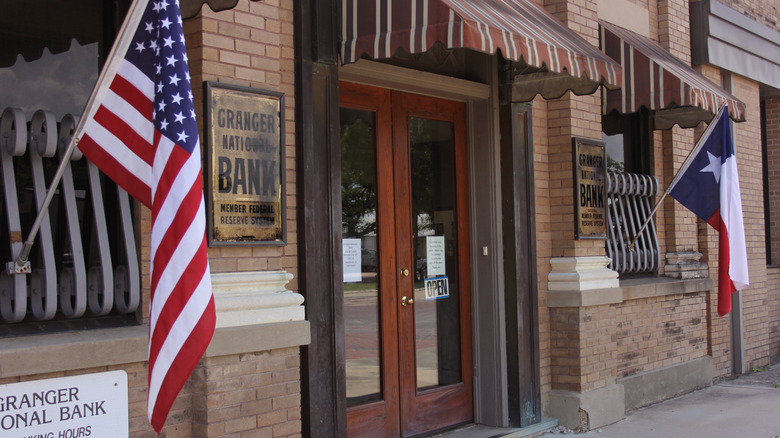Texas' 'Gateway To The Good Life' Is A Historic Little City With Vintage Western Vibes And A Dazzling Lake
On the prowl for the best "cowboy core" vacation destinations in the country? Saddle up and head to Granger. Although it's dubbed the "gateway to the good life," this Central Texas community could easily pass for the gateway to the West, much like Fort Worth, Texas, known as the city "where the West begins."
Home to roughly 1,200 residents, the historic little city is located in the heart of Williamson County. It's less than an hour's drive from Austin, one of Texas' best shopping destinations. Tucked away in the Brazos Trail Region, about an hour northeast of the Austin-Bergstrom International Airport (AUS), it's in a pretty quiet part of the state, so you may have trouble finding places to stay within city limits. Plenty of accommodations can be found about 10 miles south in Taylor, including the Holiday Inn Express & Suites and Best Western Taylor Inn. You'll also find a few hotels in nearby Salado, an artsy Texas village with shopping and Scottish charm.
In Granger, the vintage Western vibes run pretty deep. So much so, that the city served as the backdrop for the frontier town scenes in the 2010 remake of "True Grit," an adaptation of the 1969 version starring the cinematic cowboy himself, John Wayne. You can certainly channel your inner "Duke" in Granger. Despite its size, there's plenty to do and see, from the shimmering Granger Lake — a refreshing respite from the searing Texas sun — to its many historical sites.
Make a splash in Granger Lake
Granger Lake is a recreational haven. Spanning just over 4,000 acres, the lake is actually a man-made reservoir located on the San Gabriel River in the Brazos River basin. The lake is surrounded by the hilly landscapes of the Texas Blackland Prairie and has four sweeping parks flanking each corner, where you can enjoy thrilling water activities, lakeside camping, picnics, and peaceful walks in nature.
Some of the other highlights include swimming beaches, which you'll find at Wilson H. Fox Park and Friendship Park. To the south lies Taylor Park, which offers access to the Comanche Bluffs Trail, a relatively easy 1.4-mile loop along the water's edge. Willis Creek Park, perched at the mouth of Willis Creek on the western shore of Granger Lake, offers equestrian trails and beautiful views of wildflowers in the spring. The parks are open year-round, though there is a day use fee of $5, at the time of writing.
If you plan to get out on the water, you may be required to clean, drain, and dry your boat and equipment beforehand to prevent the spread of invasive species. While at the lake, do some bird watching at the Sore Finger, Willis Creek, and Pecan Grove Wildlife Areas, as well as the Granger Wildlife Management Area, situated in between the Willis Creek and Taylor Parks. The lake is also popular for fishing, particularly white bass, crappie, and cat fish.
Immerse yourself in the history of Granger
Just about every corner of Granger is rich with history. Lined with buildings and storefronts that appear frozen in time, it's easy to imagine what life was like back in the late 1800s, when the city first came to be. Famed for its cotton and gin, Granger was founded as a railroad depot, receiving incorporation in 1891. Many of the city's historic buildings are still standing today, including Granger City Hall, a former bank building from the early 1900s. Constructed in 1901, the Young House provides another glimpse of the past, featuring the opulent Classical Revival and Beaux Arts architectural styles.
Czech heritage also run deep in this Williamson County city. Decamping to Texas for its inexpensive and fertile farmland, Czech Protestant immigrants began planting roots in Granger some 140 years back. By 1880, the first Czech Protestant church was established in the area. Granger Brethren Church, which can be seen on West Broadway Street, soon followed in 1892.
Even the roads that wind through Granger hold historical significance. Many of the streets are still lined with the same hand-laid bricks that were installed way back in 1912, earning Granger the distinction of being the first Texas town with a population of under 5,000 to pave its roads. In 2005, the Texas Historical Commission recognized the red brick roads with a Texas Historical Marker, so be sure to snap a photo before you leave.


